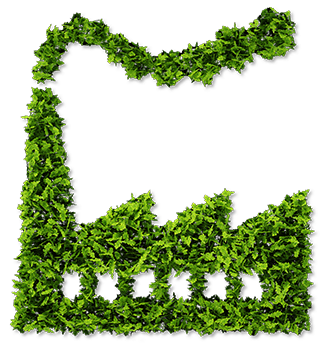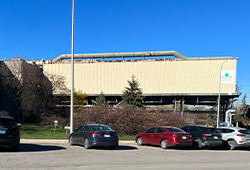Public Liaison Committee
Emerald Energy from Waste’s Public Liaison Committee (PLC) serves as a link between the facility and the local community. Along with keeping up to date on facility operations, the PLC can help address any concerns raised by the community.
The committee typically meets bi-monthly at the Emerald Energy from Waste facility. For rules and more information on the PLC meetings, please review the PLC charter.
The PLC is made up of local volunteers who have an interest in their community and the waste facility. If you are interested in joining the PLC, please fill out the PLC application form and submit to Shannon Murphy at Sh***********@********fw.com.
For More Information on the Public Liaison Committee
Joseph Lyng
General Manager
Jo*****@********fw.com
Jeremy Pappain
Sustainability & Quality Manager
Je***********@********fw.com
Public Liaison Committee Glossary Of Terms
Emerald prepared a Glossary of Terms for members of the PLC to help them understand some of the terms commonly used in the waste management industry. See below for the most commonly used terms or download the full glossary.
Certificate of Approval
The Ministry of the Environment issues written permission for establishing and operating a waste management site or facility, as well as for water discharge or air emission, which has now been replaced by Environmental Compliance Approval.
Diversion
Redirecting waste materials away from disposal through re-use, recycling or reduction programs.
Energy from Waste
The process of reducing the volume of waste requiring disposal. The process can be thermal (gasification or mass burn incineration), biological (anaerobic digestion).
Environmental Assessment
A systematic process that assesses the effects of a proposal on the environment while following applicable laws or regulations. This process involves evaluating the need, exploring alternatives, identifying impacts, and implementing mitigative, remedial, monitoring and/or compensatory measures.
Environmental Compliance Approval
The Ministry of the Environment and Climate Change issues written approval for establishing and operating a waste management facility, as well as for water discharge and air emissions, which now replaces the Certificate of Approval.
Environmental Protection Act
An Ontario statute that governs the conservation of the natural environment, setting the requirements and approvals for waste management facilities.
Gasification
A thermal process converts the volatile components of waste (e.g., organic materials, plastics) into gas and bottom ash. Later in the process, the gas burns to recover energy.
Hazardous Waste
Means a waste that is a,
- hazardous industrial waste,
- acute hazardous waste chemical,
- hazardous waste chemical,
- severely toxic waste,
- ignitable waste,
- corrosive waste,
- reactive waste,
- radioactive waste, except radioisotope wastes disposed of in a landfilling site in accordance with the written instructions of the Canadian Nuclear Safety Commission,
- pathological waste,
- leachate toxic waste, or
- PCB waste,
but does not include,
- hauled sewage,
- waste from the operation of a sewage works subject to the Ontario Water Resources Act where the works.
- is owned by a municipality,
- is owned by the Crown or the Ontario Clean Water Agency, subject to an agreement with a municipality under the Ontario Water Resources Act, or
- (receives only waste similar in character to the domestic sewage from a household,
- domestic waste,
- incinerator ash resulting from the incineration of waste that is neither hazardous waste nor liquid industrial waste,
- waste that is a hazardous industrial waste, hazardous waste chemical, ignitable waste, corrosive waste, leachate toxic waste or reactive waste and that is produced in any month in an amount less than five kilograms or otherwise accumulated in an amount less than five kilograms,
- waste that is an acute hazardous waste chemical and that is produced in any month in an amount less than one kilogram or otherwise accumulated in an amount less than one kilogram,
- an empty container or the liner from an empty container that contained hazardous industrial waste, hazardous waste chemical, ignitable waste, corrosive waste, leachate toxic waste or reactive waste,
- an empty container of less than twenty litres capacity or one or more liners weighing, in total, less than ten kilograms from empty containers, that contained acute hazardous waste chemical, hazardous waste chemical, ignitable waste, corrosive waste, leachate toxic waste or reactive waste, or
- the residues or contaminated materials from the clean-up of a spill of less than one kilogram of waste that is an acute hazardous waste chemical.
Materials Recovery Facility
A waste processing facility that removes recyclable materials from a waste stream through shredding, baling, pulverizing, separating, sorting, or otherwise treating or altering waste to facilitate further transfer, processing, utilization, or disposal.
Powder Activated Carbon
Charcoal that undergoes heat treatment to enhance its ability to absorb materials and is crushed down to a fine grain size of less than 0.5mm. It absorbs contaminants from the flue gas stream, including mercury and dioxins.
Beyond Landfills. Backed by Science.
Energy from Waste is not a theory. It is a proven technology that helps industrial, commercial, institutional, and municipal organizations manage residual waste responsibly and meet sustainability mandates.


